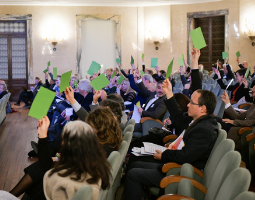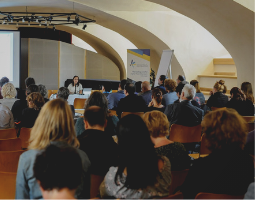The semester break is coming to an end, and the preparations for the start of a new academic year are entering their final phase. It will be the third consecutive academic year that will take place under the conditions of the COVID-19 crisis. But let’s have a look back: whereas the pandemic hit students, teachers and institutions two years ago in the middle of the academic year and without being in any way prepared to how to deal with it, the following year allowed at least to provide to some amount practical arrangements, both in terms of implementing protective measures and certain technical solutions, as well as in terms of scheduling and organising lessons.
This year, the situation is still different. The good news is that the wave of vaccinations has now also reached the student age group, so it can be assumed that the conditions for on-site teaching are significantly better than in the last spring. In some countries, even choir rehearsals for those who have been vaccinated or tested are now possible with only a few restrictions. In most cases, however, there is still no return to the status quo ante, even though by far most of the students that have been asked on the topic in several surveys report that they suffered a lot from the lockdown and the related restriction of social interaction and that they are longing for a return to face-to-face lessons – even more than the average among music students.
Of course, the fact that more space is required to teach a certain number of students in one room, with social distancing rules that will continue to apply, puts an extra burden on the institutions. But it can also be asked whether the higher education institutions and the governments responsible for them have done enough to adequately prepare them for the time after the pandemic. Adequately means in this context: in such a way that the knowledge and experience acquired during the lockdown, as well as newly developed technical solutions, are considered as an integral part of an overall concept of hybrid learning & teaching, and that decisions on what is provided and what isn’t are not just following the principle of what is permitted or easy to organise instead of what is efficient, pedagogically sensible and artistically meaningful.
It is worth remembering that these days, the first instalment from the Corona recovery fund is transferred to the nation states. We have learned that supporting the recovery of the cultural sector, which has been so severely hit by the COVID crisis, is regrettably not explicitly listed among the infrastructural measures for which money from this fund may be used, but promoting digital literacy and implementing and sustaining digital education is.
Now that the new academic year is on the doorstep and the money is gradually arriving from Brussels, the time has come when it is worthwhile to make the local political decision-makers aware of these issues.






